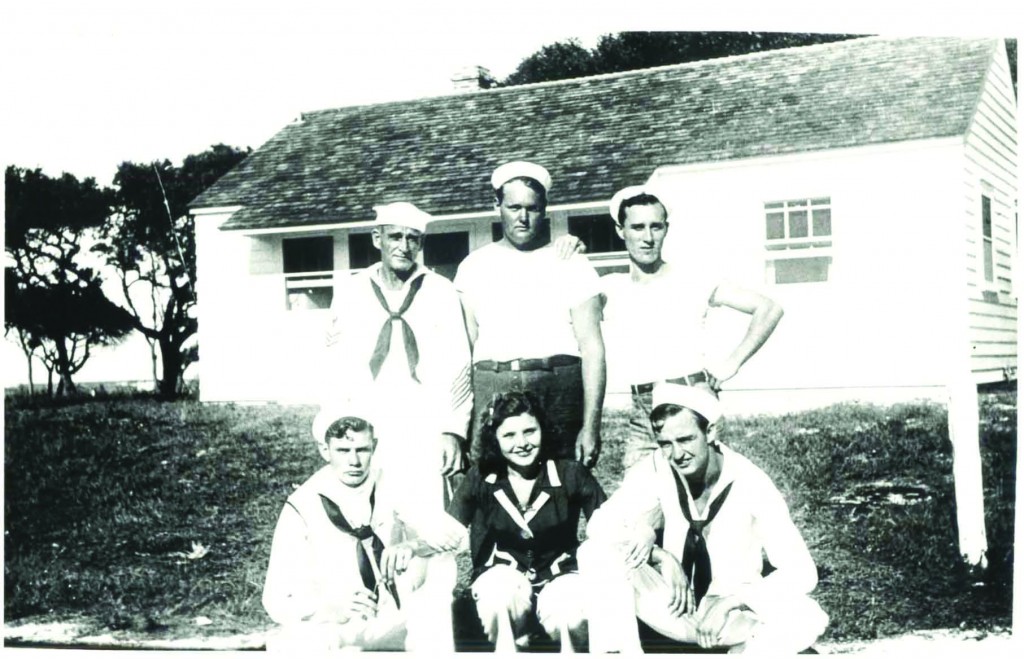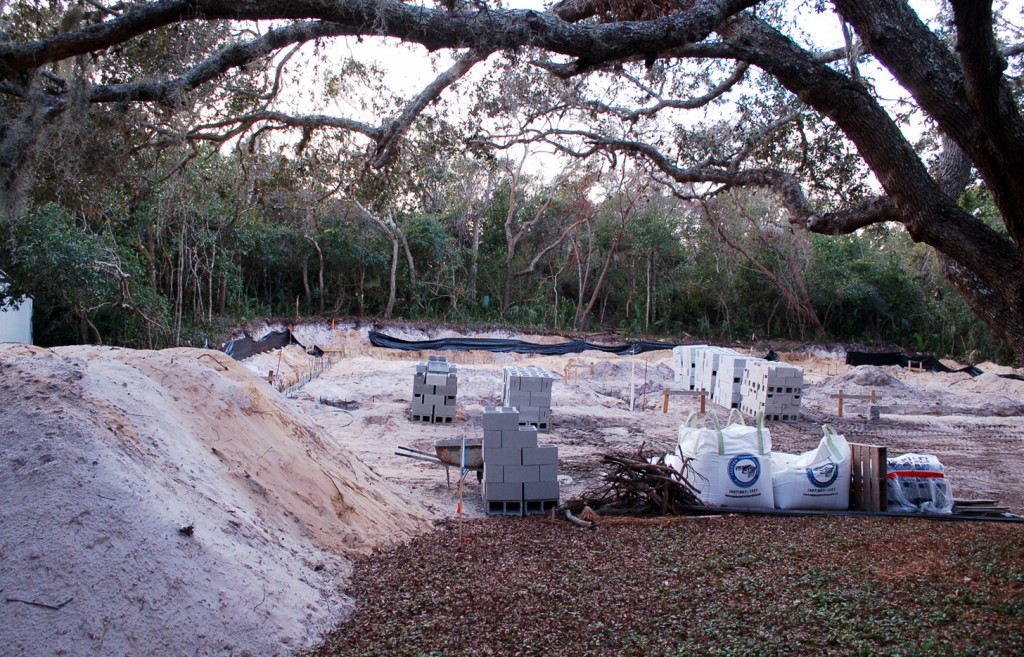The new year arrived with a burst of cold air (Florida winter last three whole days this year, it was tough, but we powered through!) and the promise of exciting things on the horizon.
We’ve written before about our new Maritime Archaeology & Education Center, which is finally under construction, but we haven’t shared what this new facility will mean for us in terms of telling the stories of St. Augustine’s connections to World War II.
New spaces provide room for historic preservation
Just north of the brick wall surrounding the Lighthouse and Keepers’ House, two white clapboard buildings with green trim sit quietly beneath the arms of our Museum’s familiar live oaks. For the last few years, our growing Museum has had to use these buildings to house our maritime archaeology and maintenance teams, but with the construction of two new structures, we will be able to relocate our staff and turn these historic buildings into exhibition spaces perfect for storytelling.
And boy, do they have stories to tell.

Coasties, including Lighthouse Keeper C.D. Daniels (top, left) pose in front of the U.S. Coast Guard Barracks at the St. Augustine Light Station.
The U.S. Coast Guard (USCG) utilized the St. Augustine Light Station as a base of operations during World War II. The whole city, in fact, was packed with “Coasties” during the war as St. Augustine became the USCG’s primary home for training.
On Anastasia Island, the USCG used the St. Augustine Lighthouse as a lookout tower. Six coastguardsmen (Coasties) took turns patrolling the tower’s observation deck 140 feet off the ground, looking for any evidence of enemy activity.
During that time, German spies landed on Ponte Vedra Beach, Florida. German U-boat U-123 sank the SS GulfAmerica off Jacksonville Beach, the blaze visible from the Lighthouse.
After that attack, the Lighthouse keepers observed blackout conditions by using a much weaker lightbulb. Residents also lived in blackout conditions for the rest of the war. Coasties and female USCG personnel (SPARS) came to St. Augustine to train for the war effort.
You can help us tell these important stories!
As a maritime museum, we want to tell the stories from this critical chapter in St. Augustine history. We also want to preserve these historic structures on our campus, which is no small undertaking when facing the harsh Florida climate.
Grant funds from state and federal agencies as well as generous donations from our supporters have helped us get the ball rolling, but we are far from done. If you would like to help us honor our World War II heroes and their stories, please consider making a donation to our campaign.
Many ways to contribute:
- Make a one-time donation online (any and all amounts are appreciated!)
- Add your family name to the Lighthouse Legacy with a tile on our featured Donor Wall in the new Maritime Archaeology & Education Center.
- Call our Development Director, Michelle Adams, at (904) 829-0745 to secure a V.I.P. naming opportunity in the new Maritime Heritage Park.
Construction of the Maritime Archaeology & Education Center is supported in part by a Historic Preservation Fund grant administered by the National Park Service, Department of the Interior. The project is also sponsored in part by the Department of State, Division of Cultural Affairs, the Florida Council of Arts and Culture, and the State of Florida.
Restoration of the World War II-era buildings is sponsored by the State of Florida, Department of Economic Opportunity. Additionally, restoration of the U.S. Coast Guard Barracks is sponsored in part by the Department of State, Division of Historical Resources and the State of Florida.
Both the construction and restoration projects were also supported through generous donations from The Lastinger Family Foundation, Gasper and Irene Lazzara, Jerry and Janet Carlisle, LTC Lee McConkey, the PGA Tour, Inc., Trustee Emeritus Judy Burnett Albright, Charles Cox, and Wright Timothy Jackson.
Shannon O’Neil is the Director of Public Relations for the St. Augustine Lighthouse & Maritime Museum. A St. Augustine native, she holds bachelor’s and master’s degrees from Florida State University. She joined the Lighthouse family in 2013.


